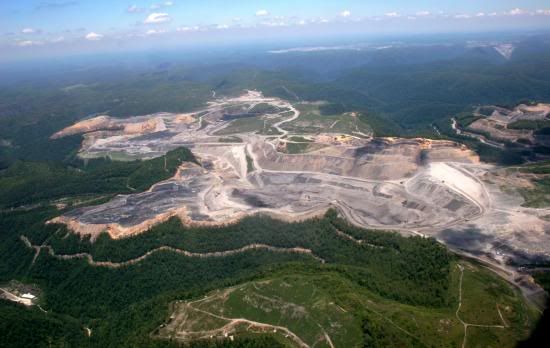Coal has always been considered a dirty source of energy, and it remains the dirtiest fossil fuel in terms of carbon emissions. The production of coal has also long been associated with images of soot-covered miners suffering from terrible consequences to their health. But a new method of coal production is proving even more destructive to their environment and human communities. The practice of mountaintop removal, which is exactly what it sounds like, is a reckless way to get coal.
The environmental impact of mountaintop removal is obvious from any photo of its aftermath. Mountainous wilderness areas, once lush ecosystems full of trees and animals, are turned into brown wastelands. After the tops of the mountains are removed, the barren area is smoothed out to supposedly allow nature to "reclaim" the land. However, the land left behind is highly infertile and inhospitable. Even after years, the land is suitable only for grass and insects. Some estimate it could take as long as 100 years for the land to fully regenerate.
Perhaps the greatest victims of mountaintop removal are the mining communities nestled in valleys between the coal mountains that are being destroyed. The waste material that comes from the mountains is simply dumped into the surrounding valleys, often causing streams to flood into surrounding communities. The waste is also filled with pollutants, which can contaminate the nearby water supplies. After the generations of hard work that these mining communities have given to the coal industry, their land is being stripped of all value for short-term profits. But that's not an argument the coal companies can here. Anything besides the bottom-line, as any good capitalist would say, is simply an externality.




No comments:
Post a Comment